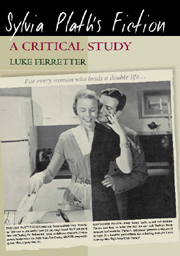Introduction
Published online by Cambridge University Press: 12 September 2012
Summary
There are two major ways of thinking about Sylvia Plath's work in contemporary criticism. One way, dominant since the publication of Ariel, is to think of this work as a progression towards the greatest poetry of Plath's career, the poems of 1962 and 1963. Plath herself said that these poems ‘will make my name’ (LH 468), and critics continue to think of her work, in Nancy Hargrove's words, as a ‘journey toward Ariel’. Tim Kendall writes of her 1954–55 poems, ‘Were they not produced by the author of Ariel, the poems would hardly merit attention’. In the introduction to their collection of Plath's visual art, Eye Rhymes, Kathleen Connors and Sally Bayley describe the contributors’ interest in Plath's early work as ‘an attempt to answer the question, How did Plath arrive at Ariel?’ During the last decade or so, another way of thinking about Plath's work has also begun to emerge, which can best described, in the title of Tracy Brain's study, as an investigation of ‘the other Sylvia Plath’. This kind of approach is exemplified in studies like those of Al Strangeways on Plath's intellectual work, of Robin Peel on her politics, of the contributors to Eye Rhymes on her visual art and of the contributors to Anita Helle's collection The Unraveling Archive on Plath's unpublished materials, as well as Brain's work on her environmentalism, national identity and literary influences.
- Type
- Chapter
- Information
- Sylvia Plath's FictionA Critical Study, pp. 1 - 15Publisher: Edinburgh University PressPrint publication year: 2010



